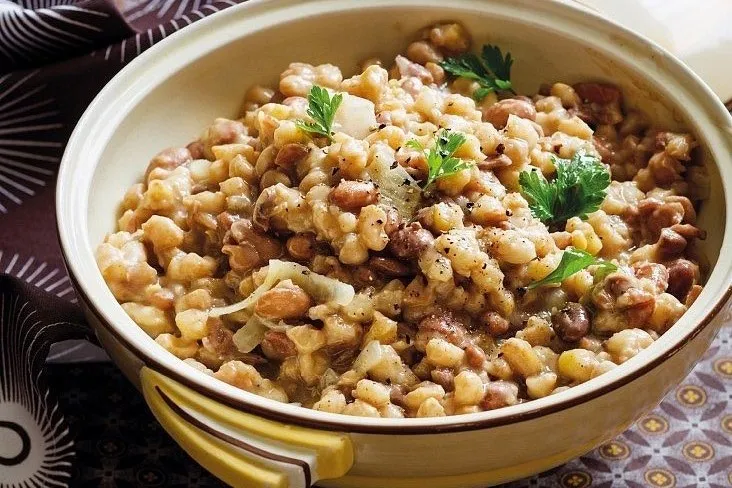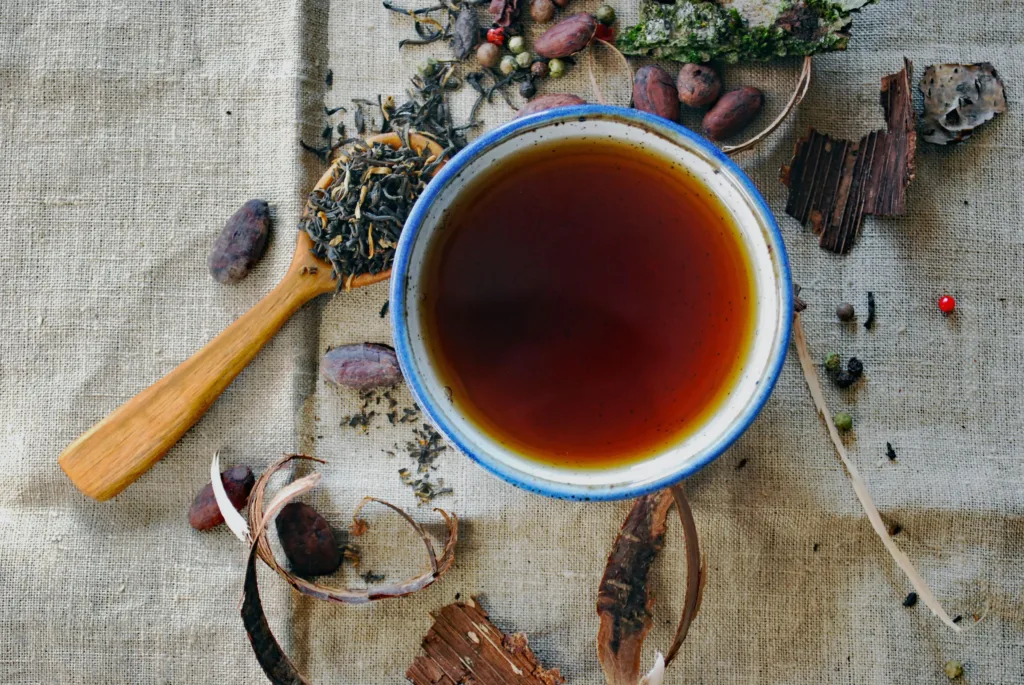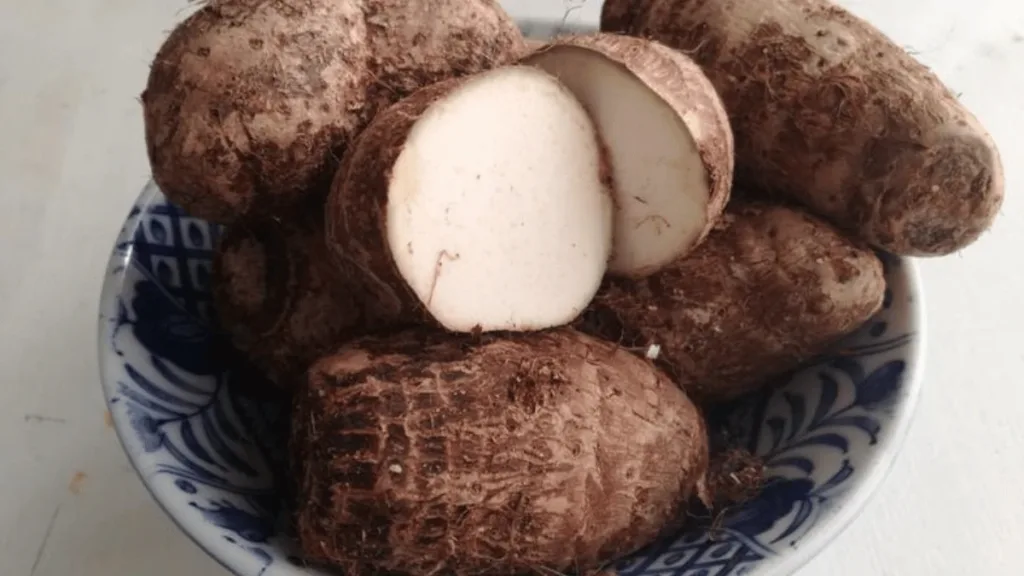Science-Backed Benefits of Traditional SA Foods

- Introduction
- Morogo (Imifino / Wild Greens)
- Sorghum (Mabele / Ting)
- Umngqusho (Samp & Beans)
- Maize Meal (Pap)
- Rooibos (Aspalathus linearis)
- Baobab (Adansonia digitata)
- Marula (Sclerocarya birrea)
- Sweet Potatoes & Amadumbe
- The Bigger Picture
- Budget-Friendly, Practical Tips
- One-Week “Back-to-Roots” Menu
- Key Takeaways
- External Links & References
- Conclusion
Introduction: Why Grandma’s Foods Still Win (and What the Science Says)
Discover science-backed benefits of traditional SA foods.
When South Africans talk about “proper food,” we’re often describing the dishes that raised us: steaming bowls of pap, hearty umngqusho (samp & beans), tangy amasi, fragrant rooibos, and foraged greens like morogo.
These foods are rooted in culture and community—but they’re also surprisingly aligned with modern nutrition science.
The big story?
Many traditional SA staples are rich in fibre, diverse plant compounds (polyphenols), and slow-release carbohydrates that can support better blood sugar, gut health, and overall resilience.
In this guide, we’ll explore iconic plant-forward SA foods and highlight what research says, plus easy, budget-friendly ways to bring them back to your plate—without losing the flavour and soul that make them ours.
Morogo (Imifino / Wild Greens): Micronutrient-Dense and Gut-Friendly
Morogo—often including amaranth leaves and other indigenous greens—is a nutrient powerhouse.
These leafy greens deliver water-soluble vitamins, minerals like iron and calcium, and a good dose of dietary fibre that feeds beneficial gut microbes. Fibre supports regularity and helps produce short-chain fatty acids linked to immune and metabolic health.

How to eat more (easy ideas):
- Sauté morogo with onion, tomato, and a spoon of peanut butter for richness.
- Fold into maize meal porridge (stywe pap) with a chilli-garlic oil.
- Stir into bean stews late in cooking to preserve colour and nutrients.
Sorghum (Mabele / Ting): Whole-Grain Goodness for Blood Sugar and Heart Health
Sorghum is a traditional African whole grain with a naturally gluten-free profile. It contains slowly digestible starch, resistant starch, and phenolic compounds (like 3-deoxyanthocyanidins) associated with antioxidant and anti-inflammatory effects.
Whole-grain patterns are consistently linked to better cardiometabolic outcomes; sorghum fits that template beautifully.
How to eat more:
- Cook whole sorghum like rice for salads with tomato, cucumber, and coriander.
- Make porridge (fermented sorghum) with a pinch of salt and serve it savoury with greens.
- Swap part of wheat flour for sorghum flour in flatbreads to lift fibre.
Umngqusho (Samp & Beans): A Protein–Fibre Combo That Keeps You Satisfied
Samp cooked with beans is more than comfort—it’s a brilliant nutritional pairing. Beans add protein, iron, potassium, and soluble fibre; maize contributes complex carbs for steady energy.
Together, they form a more complete amino acid profile than either alone and promote satiety.

How to eat more:
- Aim for a 1:1 ratio of beans to samp (by volume cooked).
- Add chopped morogo or spinach in the last 5–10 minutes.
- Season with onions, curry powder, and a spoonful of tomato paste for depth.
Maize Meal (Pap): Glycaemic Savvy with Simple Kitchen Tweaks
Pap is a cultural anchor—but like many refined starches, it can be high-GI when eaten hot and soft.
Thankfully, simple preparation tweaks can improve things: firmer textures (stywe pap), cooling and reheating (retrogradation), and pairing with fibre-rich sides can blunt glucose spikes.
How to eat more (smartly):
- Prefer stywe pap, cooled slightly before eating.
- Pair with beans, leafy greens, and tomato–onion relishes (chakalaka).
- Save leftovers to chill overnight, then reheat—hello resistant starch.
Rooibos (Aspalathus linearis): Caffeine-Free Polyphenols for Metabolic and Heart Health
Rooibos is uniquely South African and uniquely beneficial: caffeine-free, low in tannins, and rich in flavonoids like aspalathin and nothofagin.
Studies report improvements in antioxidant status, lipid profiles, and markers of glycaemic control with regular intake.

How to drink more:
- Brew it strong for iced tea with orange slices and mint.
- Make a rooibos latte with fortified oat milk and a pinch of cinnamon.
- Use concentrated rooibos as the “stock” for savoury grains.
Baobab (Adansonia digitata): Natural Vitamin C + Prebiotic Fibre
Baobab pulp brings tangy flavour plus serious nutrition: high vitamin C (supporting immunity and skin) and soluble fibre that feeds gut microbes and may help moderate post-meal glucose. Polyphenols add antioxidant capacity that complements a whole-food pattern.
How to eat more:
- Whisk baobab powder into smoothies or yoghurt alternatives.
- Sprinkle into fruit salads with mango and pineapple.
- Stir into a light vinaigrette over a morogo–sorghum bowl.
Marula (Sclerocarya birrea): Vitamin-C-Rich, Antioxidant Fruit
Beloved across southern Africa, marula fruit (and its products) bring bright flavour and impressive micronutrients—especially vitamin C—alongside polyphenols with antimicrobial and antioxidant activity. Fresh fruit is seasonal, but purees and preserves can extend the goodness.
How to eat more:
- Blend ripe marula pulp into smoothies or freeze it into sorbets.
- Make a quick marula–ginger compote to spoon over sorghum porridge.
- Pair with baobab and citrus for a vitamin-C-rich fruit salad.
Sweet Potatoes & Amadumbe (Taro): Slow Energy, Carotenoids, and Comfort
While not uniquely South African, these starchy roots are woven into our tables. They deliver complex carbohydrates, potassium, and—especially in orange-fleshed varieties—beta-carotene (a vitamin A precursor). Bake, steam, or roast and pair with pulses for a balanced, satisfying meal.

How to eat more:
- Roast wedges with paprika and salt, serve with chakalaka and beans.
- Steam amadumbe, then mash with olive oil, garlic, and chopped morogo.
- Dice into umngqusho for extra fibre and a subtly sweet finish.
The Bigger Picture: Traditional Patterns = Diverse Fibres + Polyphenols
Zoom out, and a pattern emerges: when traditional SA meals lean on whole grains, pulses, wild greens, and local fruits, you naturally increase your intake of dietary fibre (soluble + insoluble), resistant starch, and polyphenols.
This trio is linked to:
- Better blood-sugar control and insulin sensitivity
- Improved lipid profiles and cardiovascular markers
- A more robust gut microbiome and lowered chronic inflammation
- Greater satiety to support healthy weight management
Rooibos adds a helpful, non-caloric, polyphenol-rich beverage that fits seamlessly into this pattern.
Budget-Friendly, Practical Ways to Bring It All Together
1) Build the plate
- ½ whole grains/starches: sorghum, maize (stywe pap cooled/reheated), sweet potato, amadumbe
- ¼ pulses: beans, lentils, split peas, bambara groundnuts (if available)
- ¼ greens & veg: morogo, cabbage, tomato–onion relish, seasonal veg
- Add a fruit: baobab-sprinkled citrus or marula in season
- Drink: rooibos (hot or iced), unsweetened
2) Batch-cook smarter
- Cook sorghum, cool, and store—use in salads and warm bowls through the week.
- Make a big pot of umngqusho with a 1:1 beans: samp ratio. Freeze in portions.
- Brew a litre of strong rooibos, chill, and flavour with lemon and mint.
3) Flavour like home
- Onion, garlic, curry powder, bay leaves, chilli, chutney, and fresh herbs.
- A spoon of peanut butter or crushed peanuts for richness with greens.
- Acid (baobab, lemon, tomato) brightens grains and legumes.
One-Week “Back-to-Roots” Menu (Plant-Forward)
- Mon: Sorghum bowl with sautéed morogo, tomato-onion relish, and avocado.
- Tue: Umngqusho (1:1 beans: samp), side of cabbage & carrot slaw.
- Wed: Sweet-potato and chickpea chakalaka over stywe pap (cooled/reheated).
- Thu: Rooibos-poached pears over warm sorghum with cinnamon.
- Fri: “Green pot” stew: morogo, beans, and amadumbe chunks, lemon finish.
- Sat: Marula-ginger smoothie + sorghum-baobab pancakes at brunch.
- Sun: Braai-style veg platter with pap, chakalaka, and a morogo salad.
Key Takeaways
- Traditional SA staples are not just nostalgic—they align with modern nutrition science.
- Focus on whole grains (sorghum, firm/cooled pap), pulses (beans), leafy greens (morogo), and local fruits (baobab, marula).
- Simple prep tweaks (firmer pap, cool/reheat, fibre-rich sides) can improve glycaemic responses.
- Rooibos offers a caffeine-free, polyphenol-rich beverage option with promising metabolic benefits.
External Links & References (Detailed, Research-Forward)
Peer-reviewed / Primary Sources
- Sorghum and health: overview of protective effects (2024, review)
- Phenolic compounds in whole-grain sorghum (2021)
- Rooibos in humans: lipid, antioxidant and glucose effects (2023, review)
- Rooibos: human evidence summary (PubMed)
- Baobab bioactive compounds & biological activities (2023, review)
- Baobab fruit pulp: nutritional & pharmacological attributes (2024, review)
- Baobab antioxidant capacity from pulp/shell/filaments (2022)
- Marula fruit: physicochemical properties & antioxidant activities (2023)
- Marula products: nutrition & health overview (2025, review)
- Amaranth/morogo leaves: nutrient value & processing effects
- Glycaemic responses to stiff maize porridges (regional evidence)
Contextual / Applied Nutrition Sources
- Mieliepap & glycaemic index—temperature and texture matter
- Food Security SA: improving pap’s nutritional profile (University of Pretoria)
- Umngqusho nutrition tips (Health For Mzansi)
General-Audience Explainers (useful overviews)
- Whole Grains Council: health benefits of sorghum
- EatingWell: What happens when you drink rooibos
- Health.com: health benefits of baobab fruit
Conclusion: Eat Like Home—and Let the Science Catch Up
The wisdom in South Africa’s traditional foods is clear: grains like sorghum, fibre-rich bean dishes, wild greens, and local fruits build a diet that’s naturally supportive of blood sugar, heart health, and gut resilience.
Add rooibos to sip on, and you’ve got a flavourful, affordable, and intensely local pattern that aligns with the best of modern nutrition science.
Start today: cook one pot of umngqusho, swap one refined grain for sorghum, brew a jug of rooibos, and toss morogo into tonight’s supper. Small steps, big roots—and lasting benefits.
Written by Zama Zincume — Eating Plant-Based ZA
